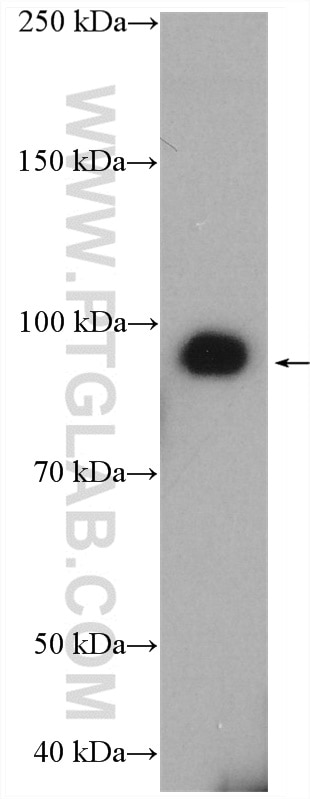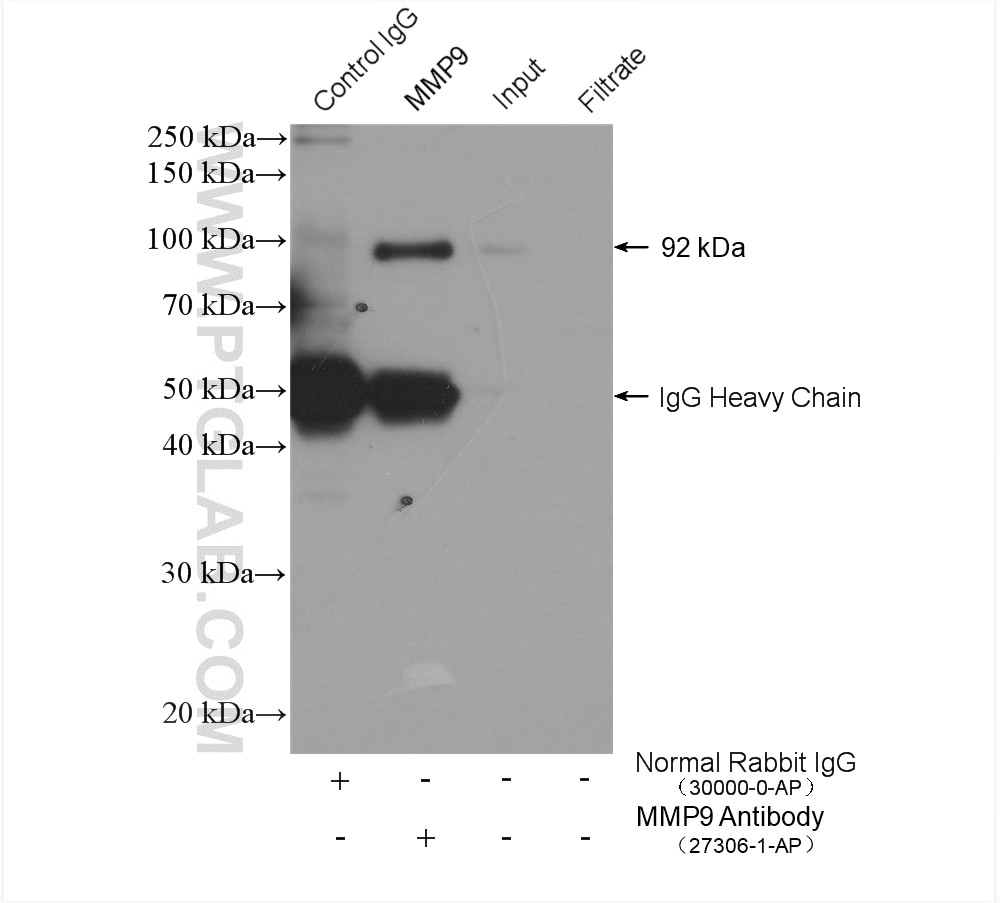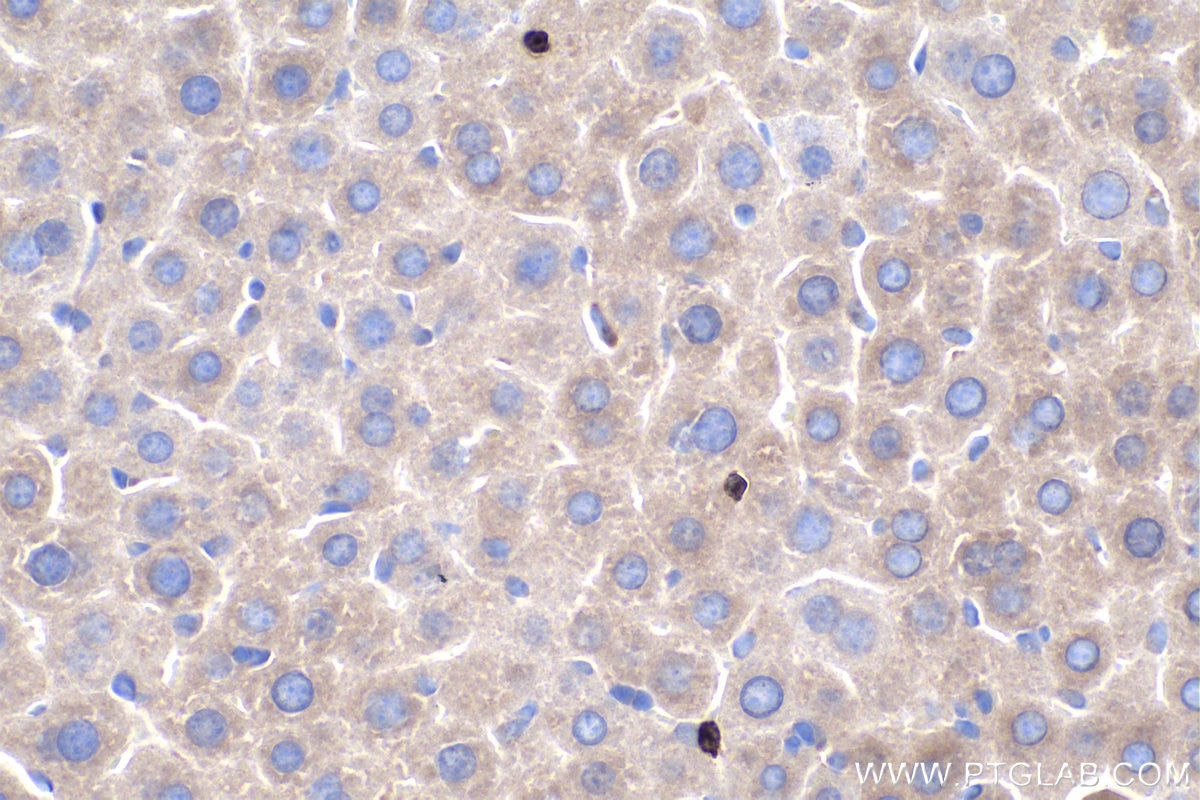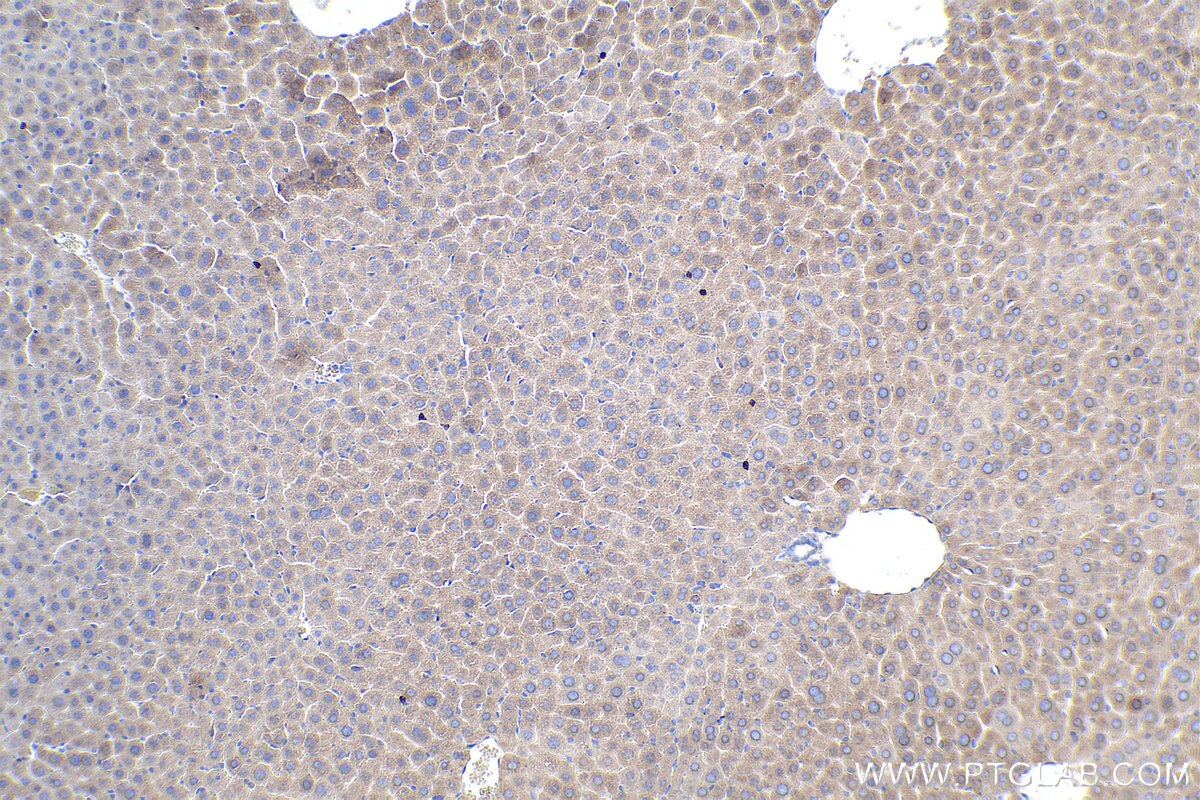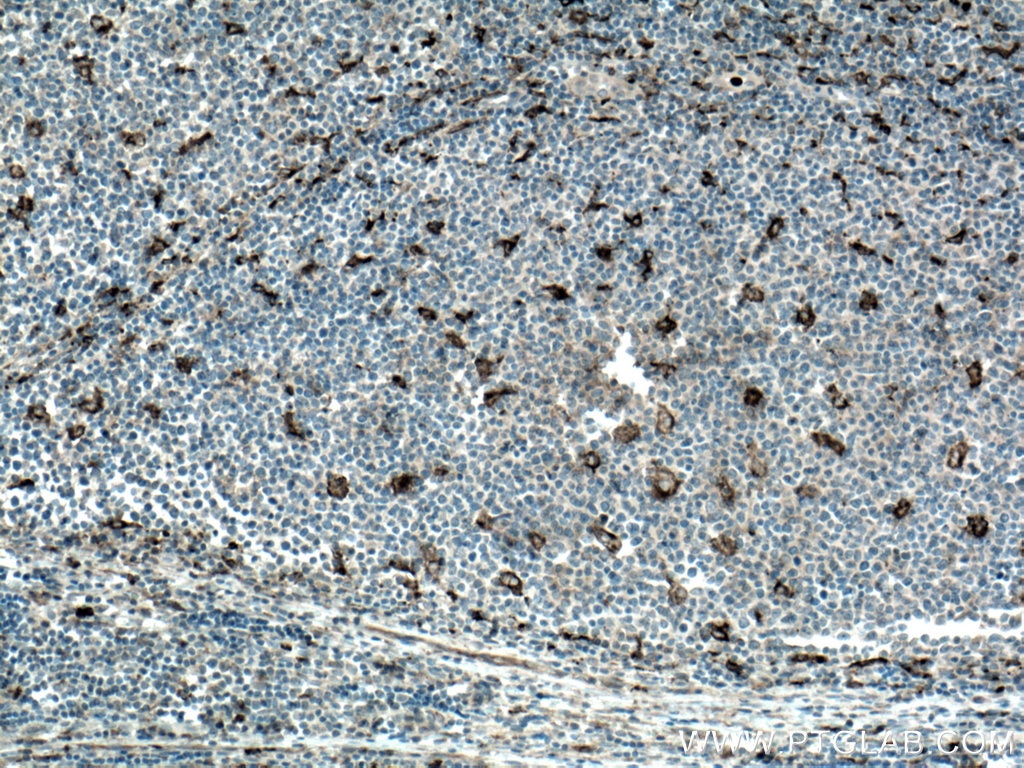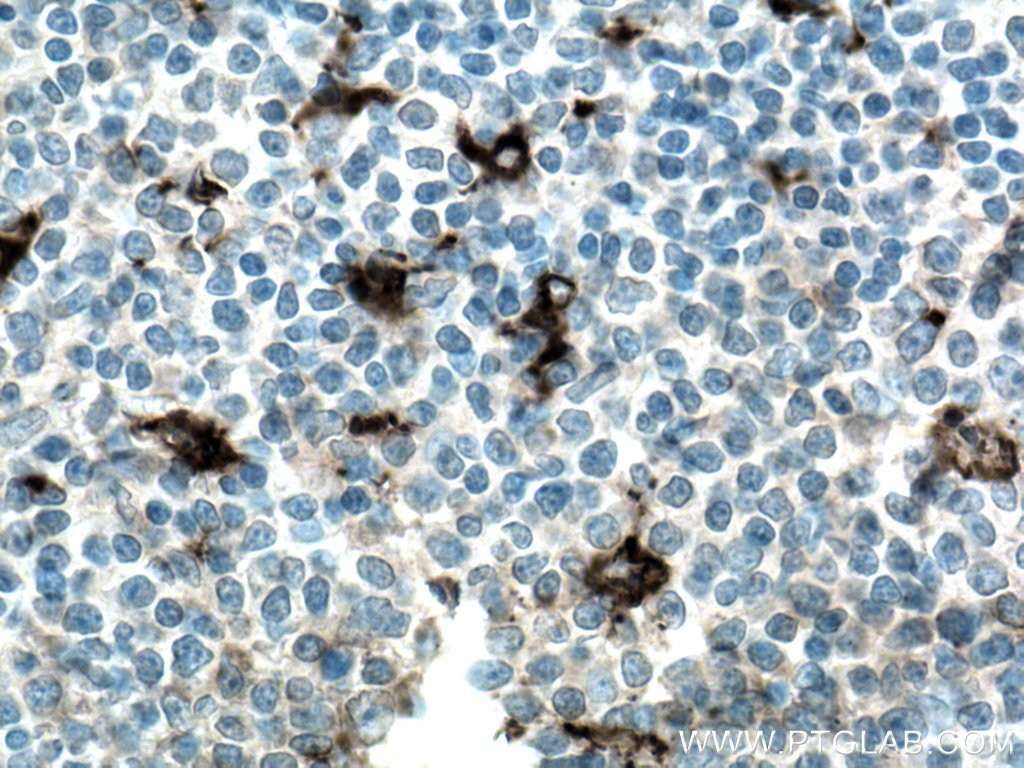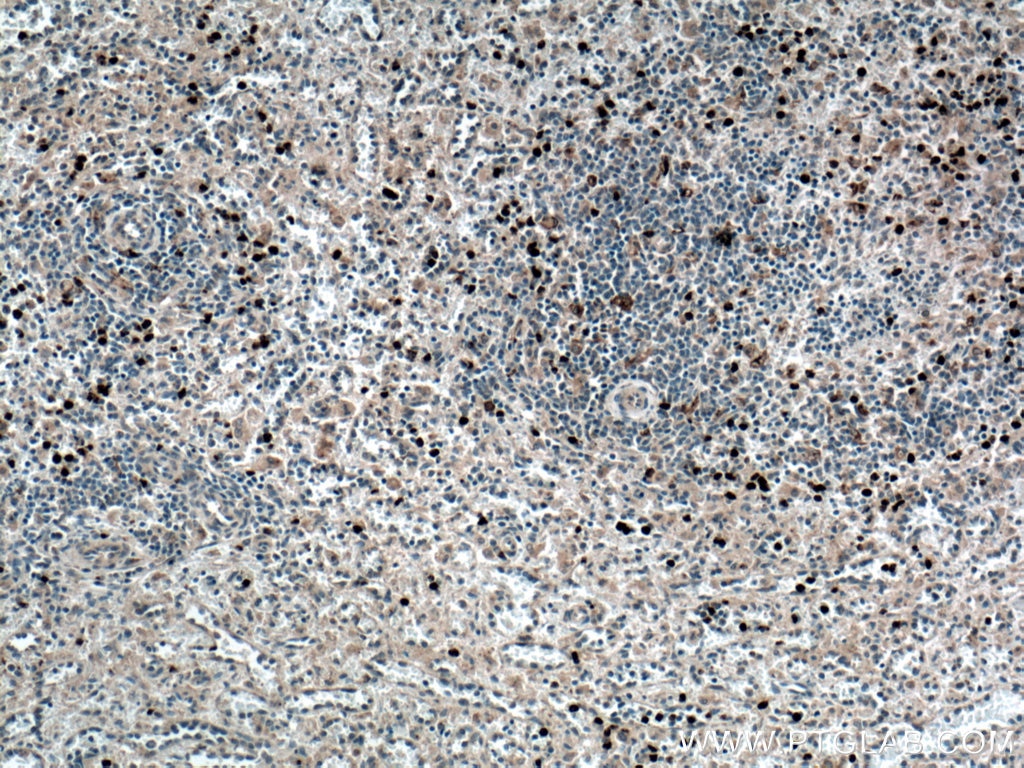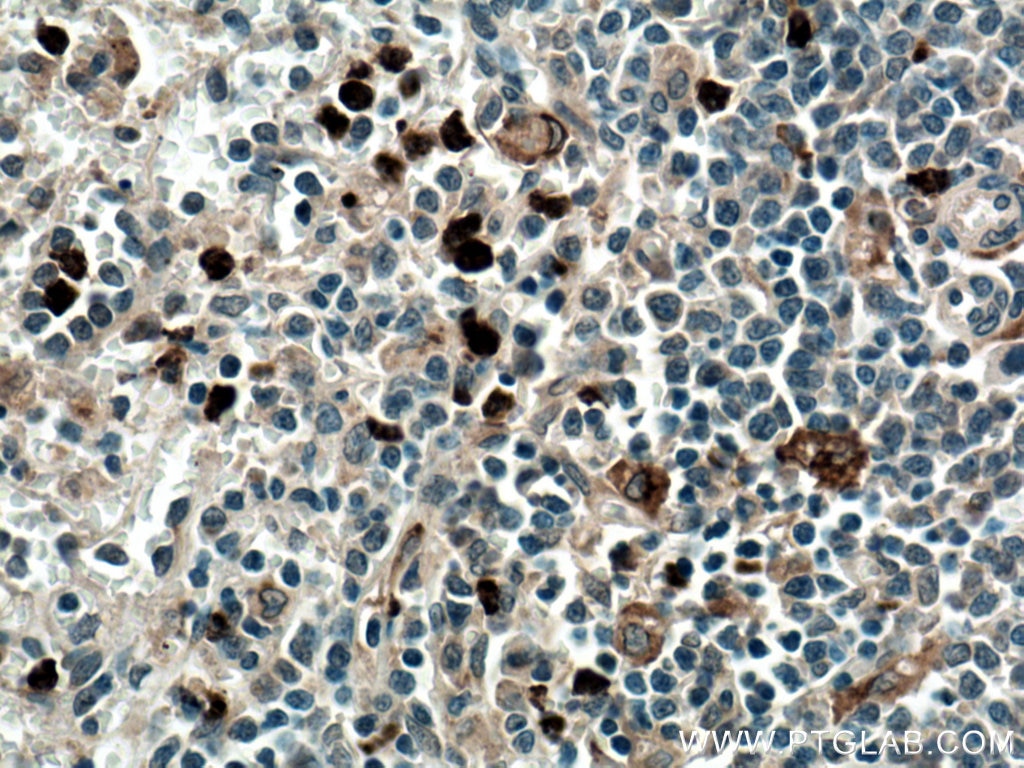Anticorps Polyclonal de lapin anti-MMP9 (Middle)
MMP9 (Middle) Polyclonal Antibody for IHC, IP, WB, ELISA
Hôte / Isotype
Lapin / IgG
Réactivité testée
Humain, souris et plus (1)
Applications
WB, IP, IHC, IF, ELISA
Conjugaison
Non conjugué
N° de cat : 27306-1-AP
Synonymes
Galerie de données de validation
Applications testées
| Résultats positifs en WB | tissu salivaire humain, |
| Résultats positifs en IP | tissu salivaire humain, |
| Résultats positifs en IHC | tissu d'amygdalite humain, tissu hépatique de souris, tissu splénique humain il est suggéré de démasquer l'antigène avec un tampon de TE buffer pH 9.0; (*) À défaut, 'le démasquage de l'antigène peut être 'effectué avec un tampon citrate pH 6,0. |
Dilution recommandée
| Application | Dilution |
|---|---|
| Western Blot (WB) | WB : 1:500-1:1000 |
| Immunoprécipitation (IP) | IP : 0.5-4.0 ug for 1.0-3.0 mg of total protein lysate |
| Immunohistochimie (IHC) | IHC : 1:50-1:500 |
| It is recommended that this reagent should be titrated in each testing system to obtain optimal results. | |
| Sample-dependent, check data in validation data gallery | |
Applications publiées
| WB | See 31 publications below |
| IHC | See 4 publications below |
| IF | See 1 publications below |
Informations sur le produit
27306-1-AP cible MMP9 (Middle) dans les applications de WB, IP, IHC, IF, ELISA et montre une réactivité avec des échantillons Humain, souris
| Réactivité | Humain, souris |
| Réactivité citée | rat, Humain, souris |
| Hôte / Isotype | Lapin / IgG |
| Clonalité | Polyclonal |
| Type | Anticorps |
| Immunogène | MMP9 (Middle) Protéine recombinante Ag26132 |
| Nom complet | matrix metallopeptidase 9 (gelatinase B, 92kDa gelatinase, 92kDa type IV collagenase) |
| Masse moléculaire calculée | 707 aa, 78 kDa |
| Poids moléculaire observé | 92 kDa |
| Numéro d’acquisition GenBank | BC006093 |
| Symbole du gène | MMP9 |
| Identification du gène (NCBI) | 4318 |
| Conjugaison | Non conjugué |
| Forme | Liquide |
| Méthode de purification | Purification par affinité contre l'antigène |
| Tampon de stockage | PBS avec azoture de sodium à 0,02 % et glycérol à 50 % pH 7,3 |
| Conditions de stockage | Stocker à -20°C. Stable pendant un an après l'expédition. L'aliquotage n'est pas nécessaire pour le stockage à -20oC Les 20ul contiennent 0,1% de BSA. |
Informations générales
Proteins of the matrix metalloproteinase (MMP) family are involved in the breakdown of extracellular matrix in normal physiological processes, such as embryonic development, reproduction, tissue remodeling, and disease processes, such as arthritis or metastasis. Most MMP's are secreted as inactive proproteins which are activated when cleaved by extracellular proteinases. Matrix metalloproteinase 9 (gelatinase B, 92kDa gelatinase, 92kDa type IV collagenase) (MMP9, synonyms: GELB, CLG4B) degrades collagens type IV and V. Studies in rhesus monkeys suggest that MMP9 is involved in IL-8-induced mobilization hematopoietic progenitor cells from bone marrow, and murine studies suggest a role in tumor-associated tissue remodeling. The pro-MMP9 is 92 kDa, and it can be detected a processed form of 68 kDa or 82 kDa. This protein can exist as a dimer of 180 kDa (PMID:7492685).
Protocole
| Product Specific Protocols | |
|---|---|
| WB protocol for MMP9 (Middle) antibody 27306-1-AP | Download protocol |
| IHC protocol for MMP9 (Middle) antibody 27306-1-AP | Download protocol |
| IP protocol for MMP9 (Middle) antibody 27306-1-AP | Download protocol |
| Standard Protocols | |
|---|---|
| Click here to view our Standard Protocols |
Publications
| Species | Application | Title |
|---|---|---|
Int J Mol Sci Comprehensive Analysis of MICALL2 Reveals Its Potential Roles in EGFR Stabilization and Ovarian Cancer Cell Invasion | ||
Front Endocrinol (Lausanne) Nicotinamide mononucleotide attenuates HIF-1α activation and fibrosis in hypoxic adipose tissue via NAD+/SIRT1 axis | ||
Int J Biol Sci TDG suppresses the migration and invasion of human colon cancer cells via the DNMT3A/TIMP2 axis. | ||
Front Mol Biosci Comprehensive Characterization of Ageing-Relevant Subtypes Associated With Different Tumorigenesis and Tumor Microenvironment in Prostate Cancer. | ||
Front Mol Biosci miR-193a-3p Mediates Placenta Accreta Spectrum Development by Targeting EFNB2 via Epithelial-Mesenchymal Transition Pathway Under Decidua Defect Conditions. | ||
Front Mol Biosci CUX1 Facilitates the Development of Oncogenic Properties Via Activating Wnt/β-Catenin Signaling Pathway in Glioma. |
